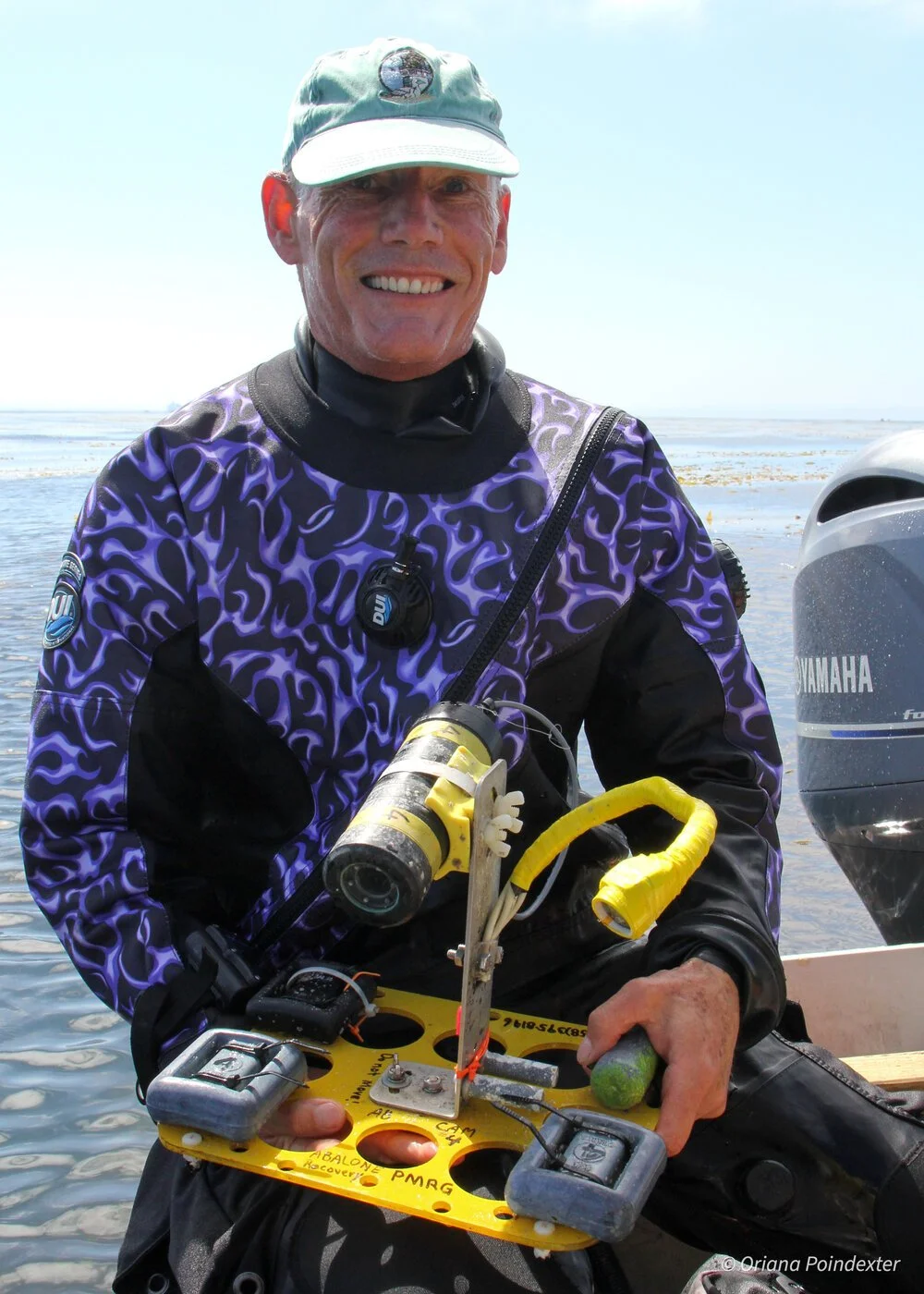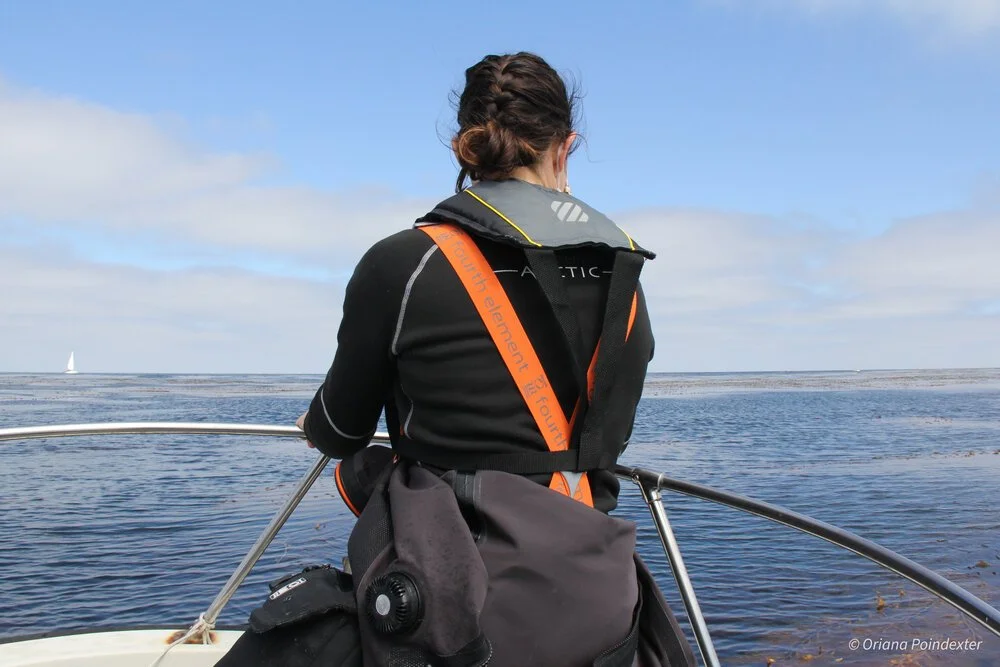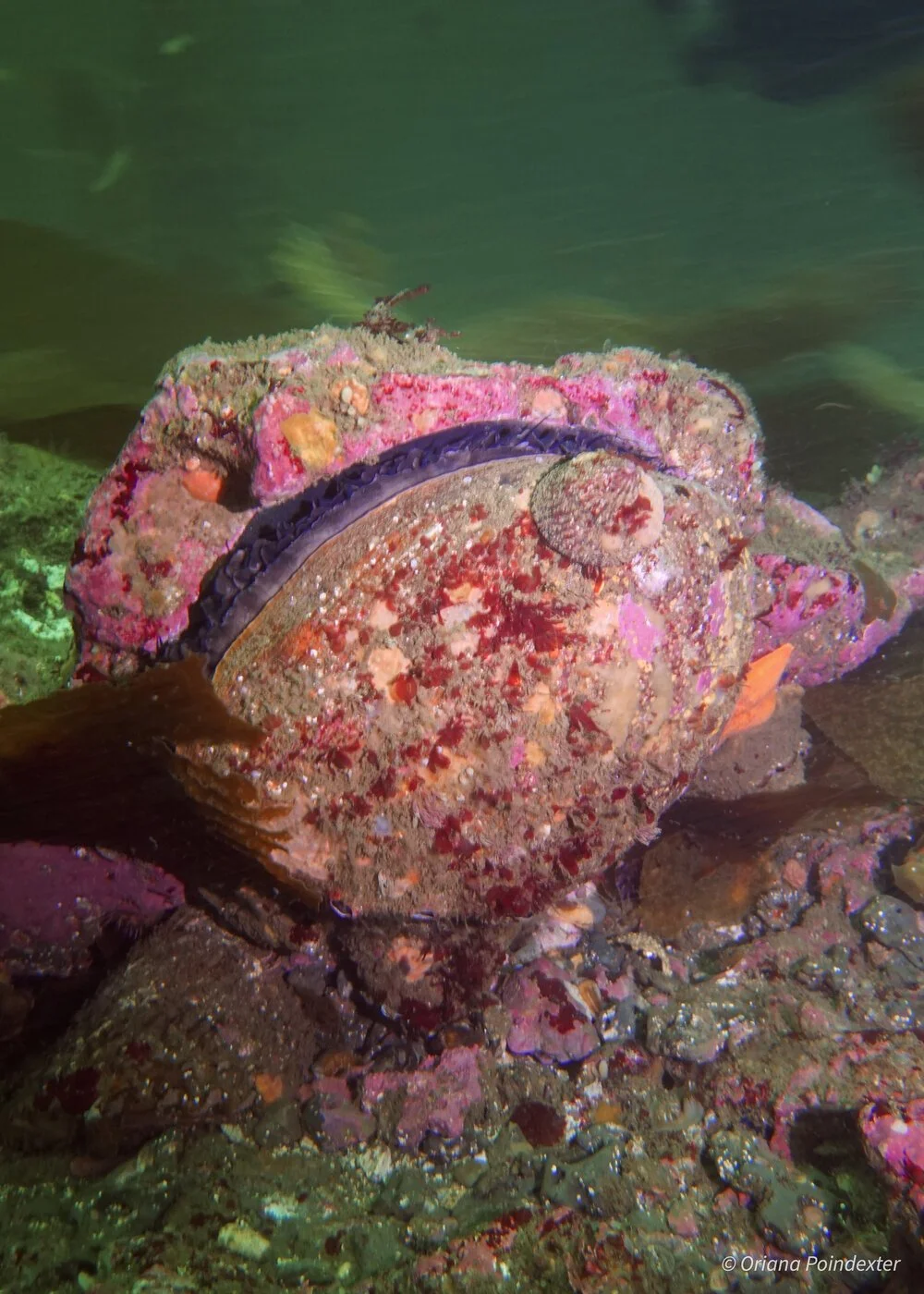Scuba Diving for White Abalone
The white abalone (Haliotis sorenseni) is elusive at the best of times. They are the first marine invertebrate to be listed as endangered in 2001 and went on to be named a NOAA Species in the Spotlight. This status, combined with a depth range of 15–150 feet, means that finding and photographing white abalone isn’t a simple endeavor. Add to this the restrictions in place due to COVID19, and you have yourself quite a task.
White abalone territory: lush forests of giant kelp (Macrocystis pyrifera).
Before COVID19, I assumed I’d be able to photograph white abalone in the wild. Normally, I’d tag along with NOAA divers conducting regular checkups on the white abalone outplanting site off the San Diego coast. But due to COVID19, NOAA dive operations have ceased for the foreseeable future. There is a near-zero chance of diving recreationally and just happening upon a white abalone without some expert assistance to locate these rare animals.
White abalone were thought to have survived the intense bout of fishing pressure of the 1970s only in remote offshore locations like Tanner and Cortes Banks. Surveys using remotely operated vehicles (ROVs) have found handfuls of animals in these areas at depths beyond the capabilities of most human divers. But these ROVs can’t operate in the thick, lush kelp forests that white abalone love due to the risk of getting the machinery tangled up in the strands of kelp.
An adult white abalone on a “living” rock encrusted with the pink crustose coralline algae. This algae is also associated with the settlement of abalone larvae.
A few dedicated friends and a NOAA scientist started diving in the coastal waters off San Diego in 2010, methodically surveying habitats on scuba that could support white abalone in an effort to cover areas that the ROVs were missing. Once they started looking for white abalone, they started finding them. This Citizen Scientist Group has grown to about 30 diving scientists and friends. They make regular trips to abalone habitats around San Diego and keep detailed records of their findings. On top of scuba dive surveys, the group has been installing time lapse cameras to record abalone behavior over time, resulting in videos like this one. These videos demonstrate that adult white abalone are quite sedentary over periods of time. If enough food floats by, why move?
The stars aligned for me on a hot morning in early July. I linked up with Amanda Bird, a marine biologist and expert on two of California’s toughest-to-find abalone species—white and pinto abalone (H. kamtschatkana). She was planning to join Bill Hagey, an engineer at Pisces Design. Bill builds marine sensors, including time lapse cameras, with Subaqua Imaging Systems.
Bill Hagey of Pisces Design holding the Subaqua Imaging Systems time lapse camera he designed, ready to be installed on the seafloor to monitor white abalone behavior. These cameras take a photo every 10 minutes for up to 8 weeks, which can be stitched together to form videos of abalone behavior.
They were planning a dive to swap out a camera at a white abalone “hotspot” off the coast of San Diego, before the camera ran out of batteries. Both Amanda and Bill are key members of the Citizen Science Group that has been diving off the San Diego coastline to search for white abalone. Amanda discovered this “hotspot” while searching for pinto abalone as a graduate student. Bill builds the cameras, handles the logistics, and is an expert diver.
Amanda Bird of Paua Marine Research Group prepares for a dive. She discovered this dive location during her graduate research.
I met up with Amanda, Bill, and our fourth diver—a freshly minted Humboldt State grad, Jeff Burr—at the launch ramp. It was already warm at 8 a.m. when Bill rolled into the lot with his boat, the Kelpfish, in tow. After loading our gear, we discussed the day’s agenda. Jeff would be my dive buddy, leaving Bill and Amanda unencumbered underwater to complete their tasks and survey their transect lines. On board, we maintained safe distances. We agreed to keep our cloth face masks in place until we switched them out for regulators when it was time to jump in the water.
The drive out to the dive site was short, as the channel wasn’t yet full of boat traffic. We were greeted by thick beds of giant kelp (Macrocystis pyrifera), requiring quick spurts of acceleration from the outboard motor to power through the lush canopy and onto our target GPS position.
Dropping anchor, we suit up and each prepare our gear for the first of two dives. Slipping into the water feels good, as the ocean takes the weight of your tank from you. The water at the surface is murky, but opens up to about 15 feet of visibility as we descend down the anchor line to the ocean floor. We nearly land on the Subaqua time lapse camera, meaning that we hit the target GPS position almost too perfectly. Our anchor landed just a few feet away from the device and the white abalone its eye has been trained on for the past 4 weeks.
Jeff and I trail behind Amanda and Bill, following their transect line through the opaque green water like a yellow brick road. They lead the way through the kelp forest, making notes whenever they find a white abalone. The bottom is relatively flat, with small groups of rocks scattered among the kelp holdfasts. A few kelp bass and rockfish dart around the obstacles, while Kellet’s whelks (Kelletia kelletii) and wavy turban snails (Megastaea undosa) litter the seafloor.
There are several species of abalone at the site; the white abalone we are hoping for, along with pink (H. corrugata) and red abalone (H. rufescens). There are a few emergent pink abalone, subadults or young adults that have recently emerged from their hiding places below the rocks and boulders, out into the open where they can access more food. The rest of the abalone are large, older animals, who seem well established on their respective rocks and sport thick, rounded shells.
A red abalone (H. rufescens) clings to a rock, just out of sight of the yellow transect line.
A large red abalone (H. rufescens) in the bottom of the frame shares a boulder with a smaller pink abalone (H. corrugata), perhaps both attracted to this rock by the crustose coralline algae.
I’d never had the opportunity to see multiple species of abalone on the same dive, so this was a real treat. The differences between the species are immediately apparent, as though they are siblings with family resemblance, but with distinct, individual traits. The reds seem enormous, with a wavy shell texture and a dark, purplish-black body peeking out. The pinks are a bit more camouflaged than the reds, with dark tentacles standing out against a light colored fringe.
White abalone live up to their name—their tentacles and epipodium are a light, creamy white with a lace-like texture, especially at depth. Their shells are thickly carpeted by algae and encrusting sponges, making them easy to miss. Without a glimpse of their tentacles or respiratory pores, they could very easily be mistaken for furry, rounded rocks.
There’s so much drift kelp flying around the channels between the rocks and the kelp holdfasts. Sometimes, it is difficult for me to get a photograph before a piece of it floats into the frame, blocking the abalone I am focusing on. I feel bad moving the pieces of kelp out of the way, as it is abalone food, and the animals position themselves precisely in the midst of it in order to catch as much as they can.
We emerge from our dives as if from a dream, rising back up through the kelp fronds along the anchor line. At the surface, the bright sunshine and blare of a nearby sportfishing boat’s loudspeaker shocks me, as initially I think they’re talking to me.
These white abalone are old, but they are in relatively close proximity to each other compared to other known locations of white abalone. The primary threat to this species today is reproductive failure, meaning they are spaced too far apart to successfully reproduce. Anything more than just a few meters apart is likely too far. This “hotspot” holds high single digits of white abalone—a crowd for this lonely species. The divers who carefully monitor these animals hope they have a chance at reproductive success, but they haven’t found the evidence yet.
Meanwhile, the time lapse camera will keep its eye trained on one of these survivors. We’ll watch it scoot around in circles and munch on drift kelp in the midst of what Bill describes as a “food storm.” There’s hope still for the white abalone as a species to weather the perfect storm of modern threats—overfishing, disease, and shifting climate—especially with such a dedicated, watchful group of partners and supporters.






